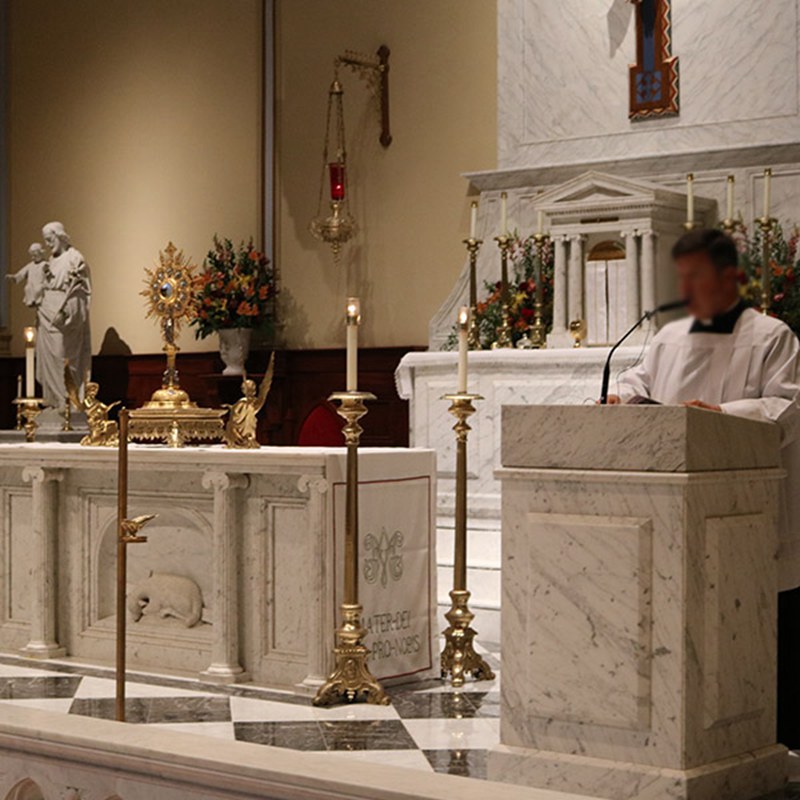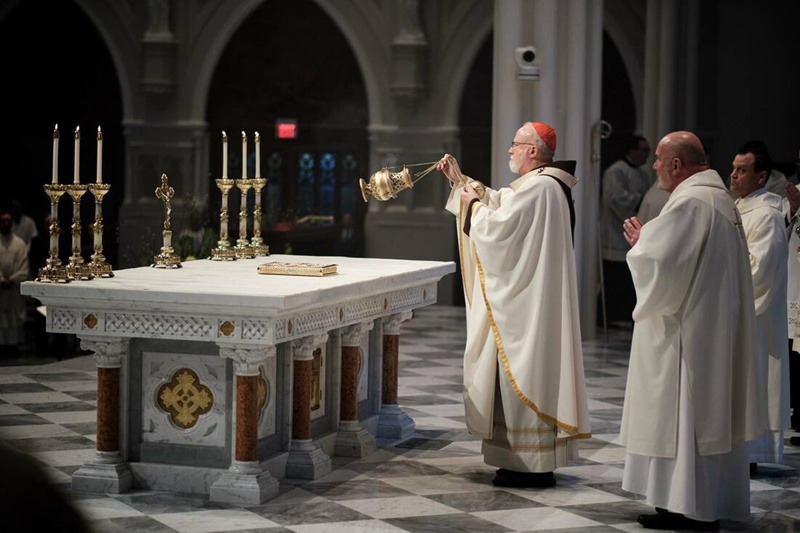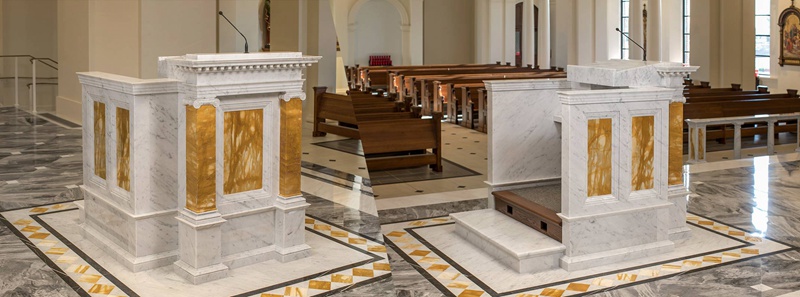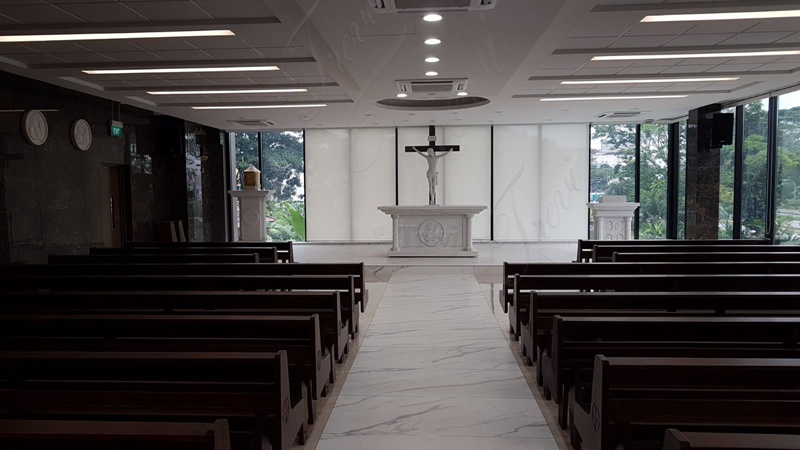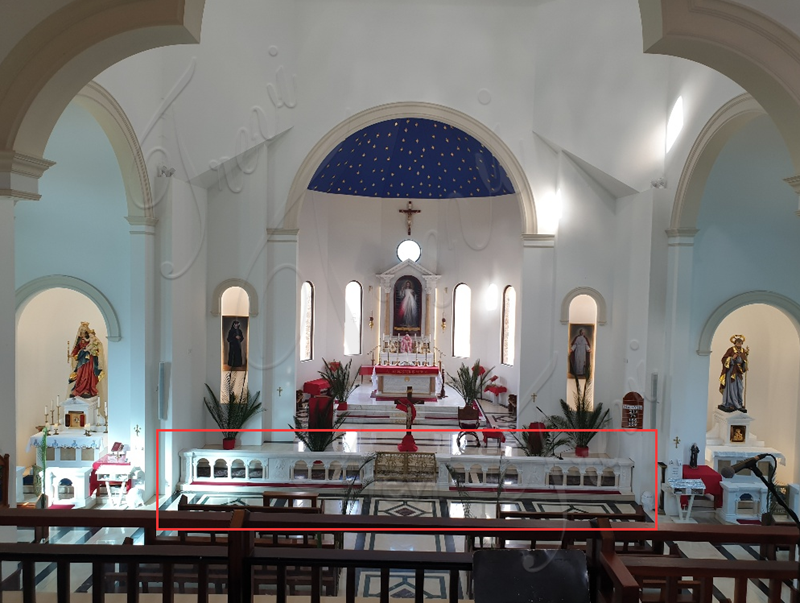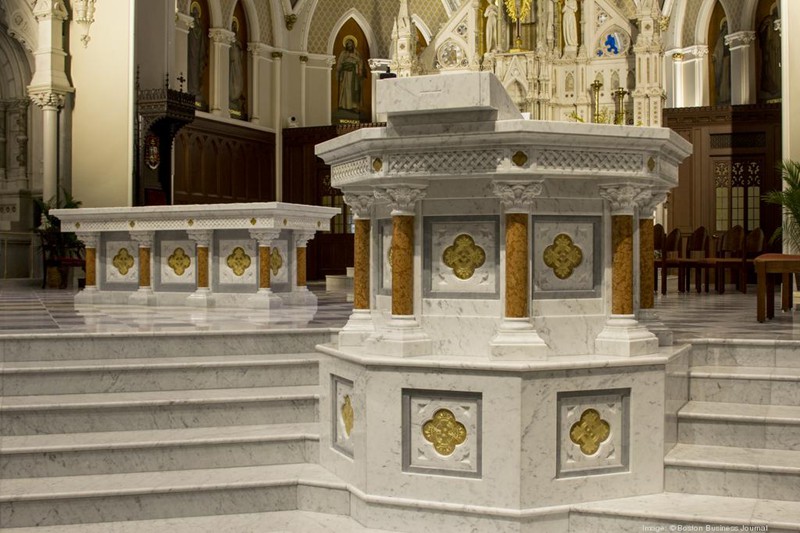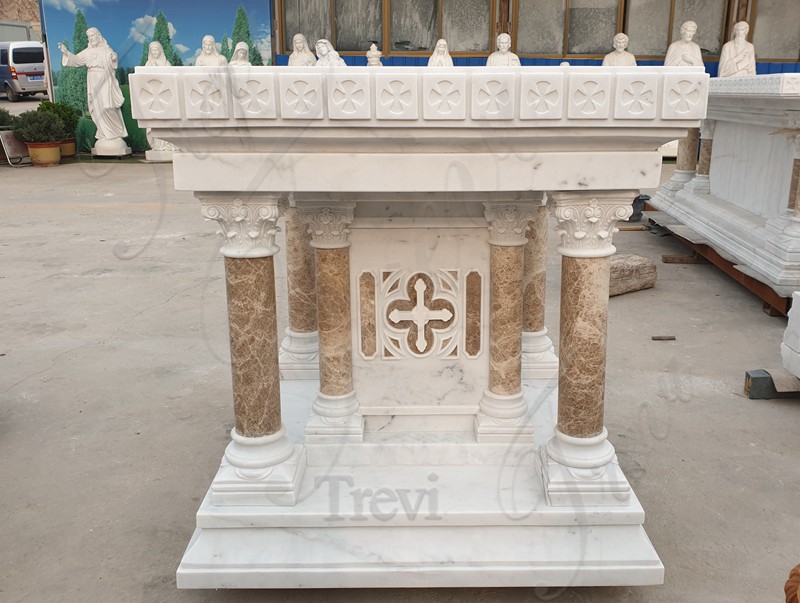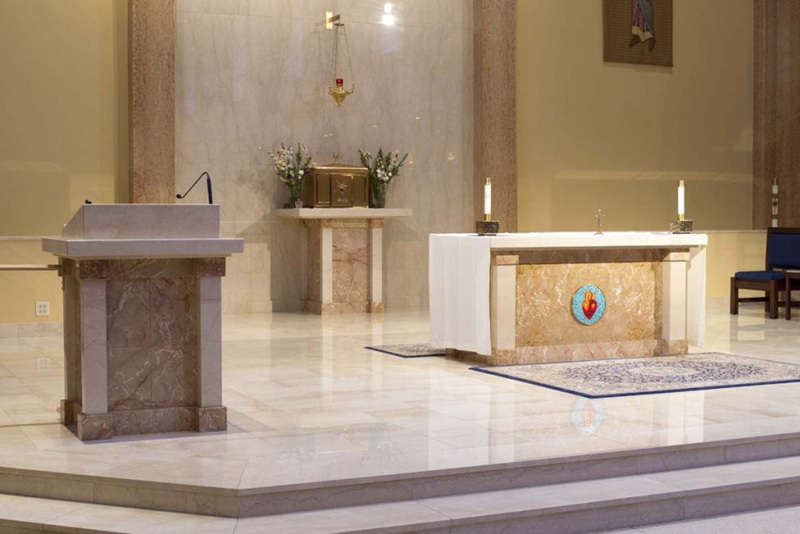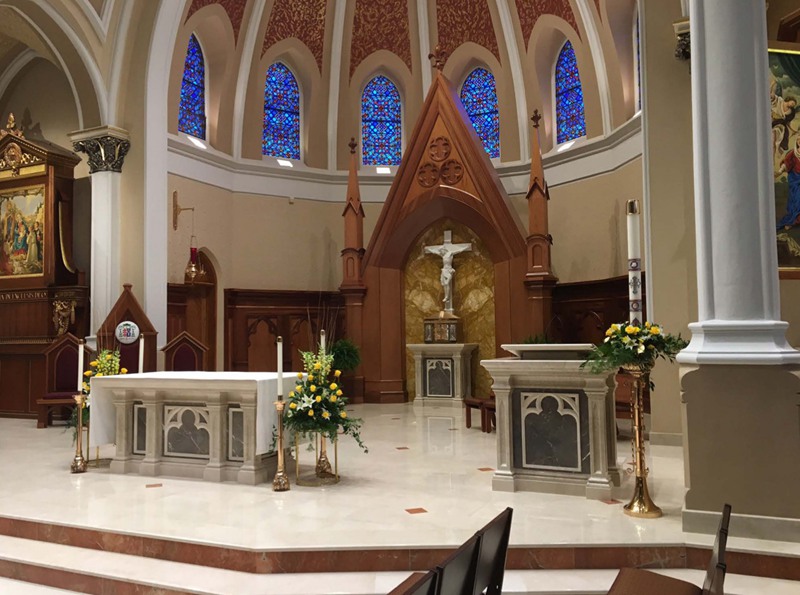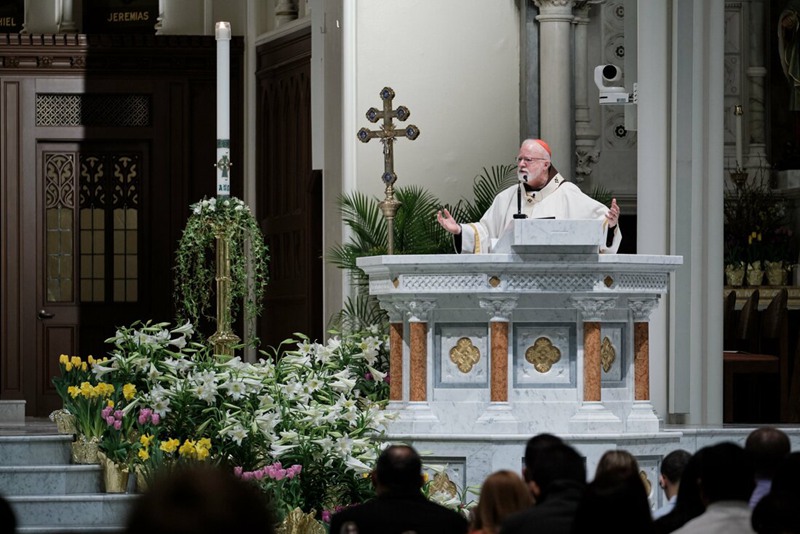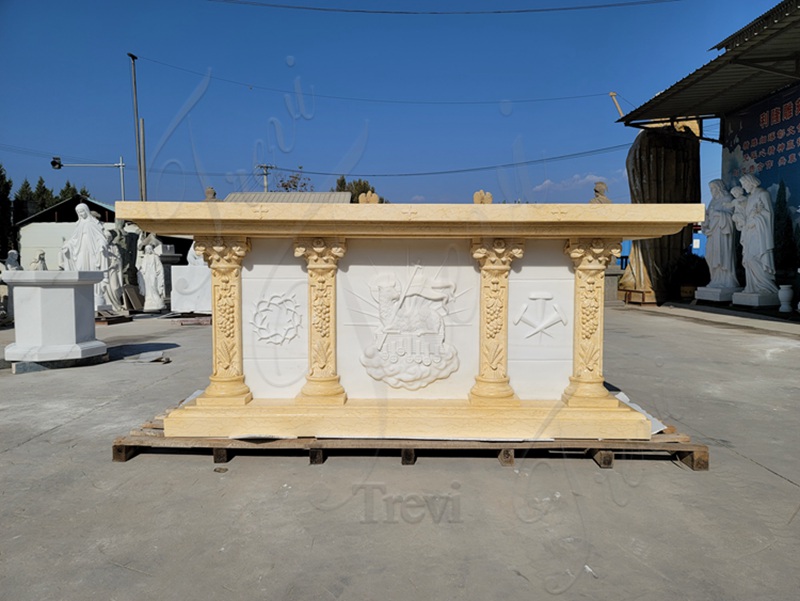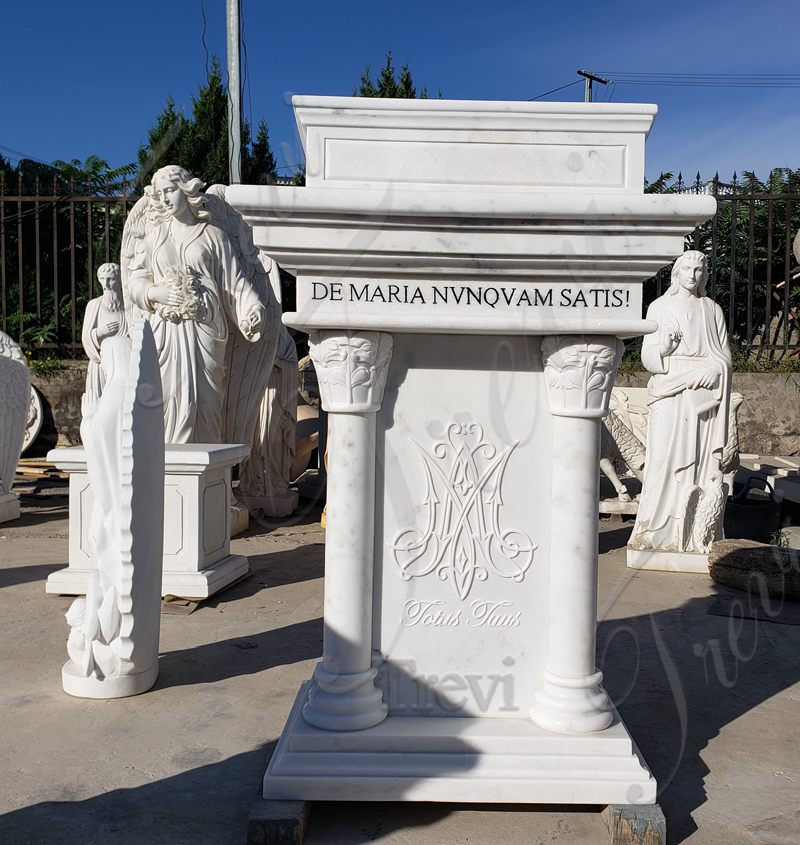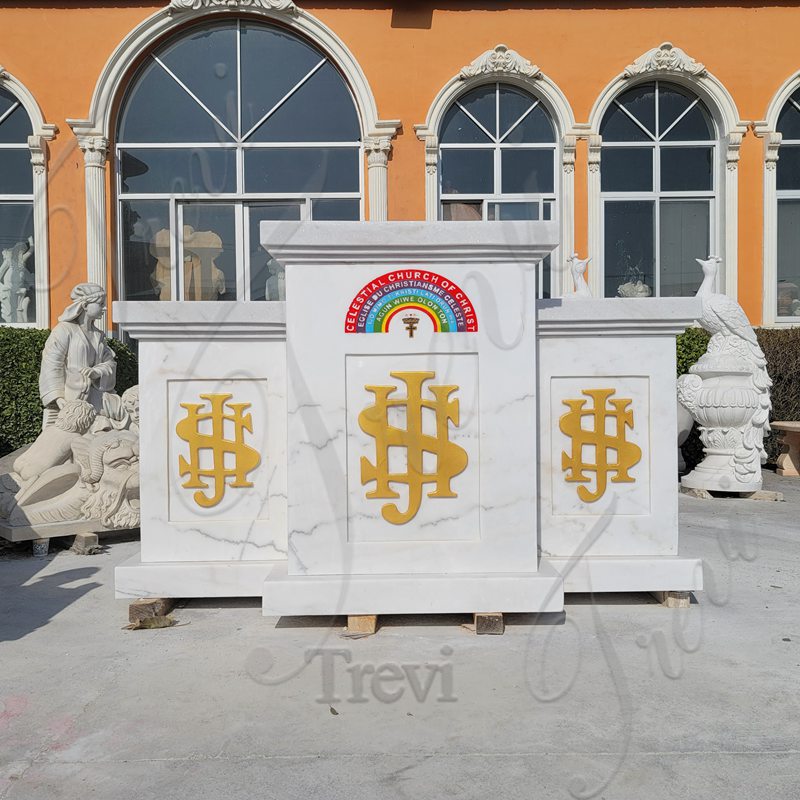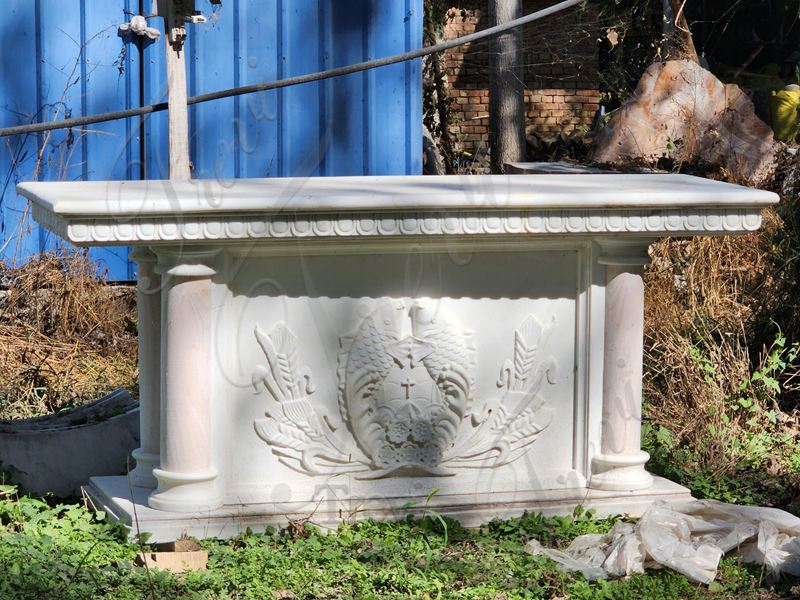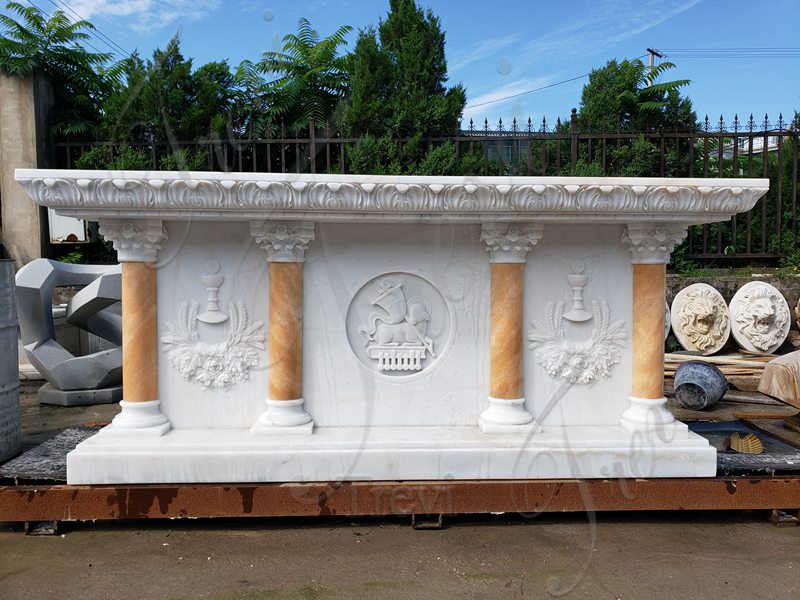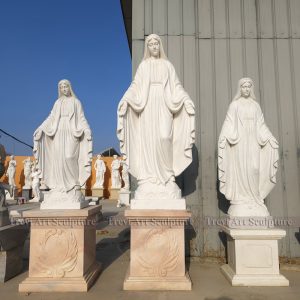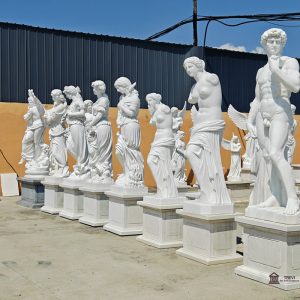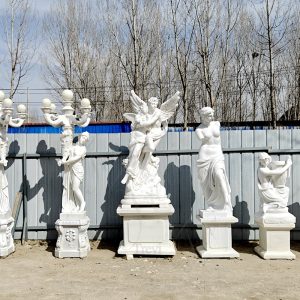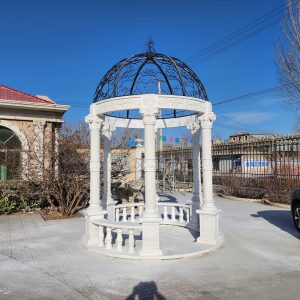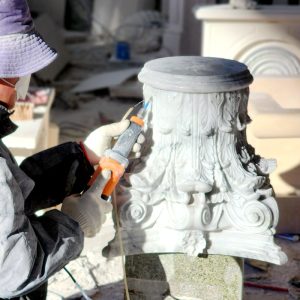A marble altar and pulpit tend to become essential items in a Catholic church. They play an important role in churches, serving both aesthetic and practical functions. So what do you know about marble chancels and pulpits? If you want to buy high-quality and affordable marble altars and pulpits, where should you look? If you want to know these answers, please read the following blog content.
1. What is the Difference Between Altar and Pulpit?
The altar in a Catholic Church holds a central role in the celebration of the Eucharist, also known as Mass. It is the sacred table where the consecration of bread and wine takes place, transforming them into the body and blood of Jesus Christ, according to Catholic belief. The altar is regarded as a holy place where the priest performs liturgical rituals. It is adorned with religious symbols and may feature a tabernacle to store the consecrated elements.
The pulpit is commonly referred to as the ambo. It is a designated area, usually elevated, from which the Scriptures are proclaimed and the homily (sermon) is delivered during Mass. The ambo is where the priest or deacon reads the biblical passages, including the Gospel, and shares reflections and teachings with the congregation. It serves as a focal point for the Word of God and encourages the faithful to understand and apply the teachings of the Church.
In summary, while the Catholic Church altar is primarily associated with the Eucharistic celebration and the consecration of the bread and wine, the pulpit, or ambo, is the platform from which the Scriptures are proclaimed and the homily is delivered to the congregation during Mass. Both elements play important roles in the liturgical worship of the Catholic Church.
2. Why is Marble Material Used for Altars and Pulpits?
a. Tradition and Symbolism:
Marble has a long-standing association with religious and sacred spaces within Catholicism. It is regarded as a material of beauty, purity, and grandeur, reflecting the reverence and solemnity of the Catholic faith. By using marble, the Church upholds a sense of tradition and symbolism that connects to its rich historical and cultural heritage.
b. Eucharistic Significance:
The Catholic Church considers the altar as the sacred place where the Eucharistic sacrifice takes place during Mass. Marble, with its enduring and majestic qualities, is seen as a fitting material to emphasize the importance and sanctity of the Eucharist. The solidity and durability of marble signify the lasting nature of Christ’s presence in the Eucharistic elements.
c. Visual Impact and Aesthetics:
Marble’s natural beauty, with its intricate veining and polished finish, adds visual splendor to the altar and pulpit. These elements are central to the liturgical space and draw the attention of the congregation. The use of marble enhances the overall aesthetic appeal and creates a sense of awe and reverence, fostering a conducive atmosphere for worship and reflection.
d. Durability and Longevity:
Altars and pulpits in Catholic churches are expected to endure for generations. Marble’s durability, resistance to wear, and ability to withstand the test of time make it an ideal material for these important structures. By using marble, the Church ensures that the altars and pulpits can withstand regular use and remain intact for years to come.
e. Cultural Continuity:
Throughout history, Catholic churches have utilized marble in their architecture and sacred spaces. By continuing this tradition and employing marble for altars and pulpits, the Church maintains a sense of cultural continuity and connection with the past. It serves as a reminder of the enduring nature of the faith and the importance of preserving its traditions.
3. Where Should Marble Altars and Pulpits Be in the Catholic Church?
The altar is typically positioned at the front and center of the sanctuary, the area of the church where the liturgical celebrations take place. It is placed against the wall, known as the “east wall,” that faces the congregation. This placement symbolizes the orientation towards the rising sun, signifying the resurrection of Christ.
The pulpit, also known as the ambo, is usually located to the side of the sanctuary, near the altar. It can be positioned on either side, depending on the church’s design and layout. The ambo is placed within easy view and reach of both the celebrant and the congregation. It should have a clear line of sight to allow the faithful to hear and see the reader or speaker clearly.
It’s important to note that while these are general guidelines, the specific placement of altars and pulpits can vary depending on the church’s architectural design, size, and local customs. Some churches may have variations or unique arrangements that align with their particular liturgical practices and traditions.
4. What to Pay Attention to When Buying Marble Altars and Pulpits?
a. Quality and Durability:
Select high-quality marble that is durable and long-lasting. Marble should be able to withstand regular use, potential wear, and the test of time. Pay attention to the grade, finish, and thickness of the marble to ensure its strength and durability.
b. Design and Aesthetics:
Consider the overall design and aesthetics of the church when choosing altars and pulpits. The style of the marble elements should harmonize with the architectural theme and ambiance of the worship space. Take into account factors such as color, veining patterns, carving details, and decorative elements that align with the church’s overall aesthetic vision.
c. Symbolism and Religious Significance:
Marble altars and pulpits should carry symbolic meaning and reflect the religious significance associated with these sacred elements. Elements such as crucifixes, religious symbols, inscriptions, or decorative motifs can enhance the spiritual and symbolic value of the altar and pulpit.
d. Customization and Personalization:
Depending on the specific needs and preferences of the church, consider whether customization options are available. This can include incorporating specific symbols, dedicatory inscriptions, or integrating unique design elements that hold particular significance for the community.
e. Budget and Sourcing:
Determine a realistic budget for acquiring the marble altars and pulpits while keeping in mind the desired quality and customization options. Research reputable suppliers, artisans, or manufacturers with experience in creating Catholic Church furnishings and obtain quotes or estimates to make an informed decision.
5. Where to Buy High Quality and Affordable Marble Altars and Pulpits?
If you want to buy a high-quality and affordable marble chancel or pulpit for your church, we recommend that you try to buy from China. Due to factors such as low labor costs and abundant marble resources, marble altars or pulpits purchased from China are often much cheaper than those purchased in the United States. Here, we recommend several reliable marble religious sculpture suppliers for you, you can choose by comparison: chinamarblesculpture.com, cnstatue.com, and milystatue.com. These factories have rich experience in producing marble religious sculptures such as marble altars and pulpits, and countless marble religious sculptures have been exported all over the world. If you have purchasing needs, you can make an inquiry.
